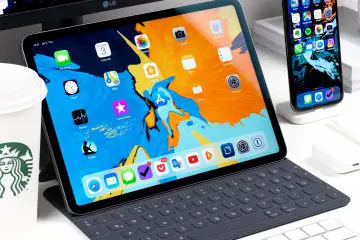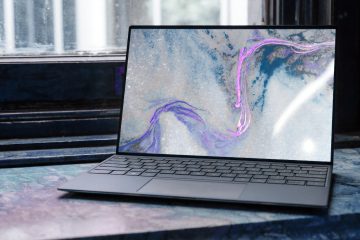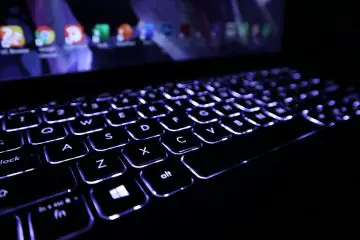In our ever-evolving digital landscape, the remarkable advancements in computer vision models have revolutionized the way machines perceive and understand the visual world. With their ability to extract meaningful information from images and videos, these models have emerged as the backbone of numerous applications, from autonomous vehicles and medical imaging to facial recognition and augmented reality. By emulating human vision, computer vision models bridge the gap between pixels and knowledge, opening up a world of possibilities for both researchers and practitioners alike.
With an insatiable appetite for data and an uncanny knack for pattern recognition, computer vision models can sift through vast amounts of visual information, providing valuable insights and facilitating complex decision-making processes. Leveraging deep learning techniques, these models have transcended traditional image processing methods, empowering machines to perceive, understand, and interpret the visual cues that surround us.
At the core of this technological marvel lies a diverse repertoire of computer vision models, each with its unique architecture, purpose, and capabilities. From the pioneering deep learning models like AlexNet and VGGNet that set the stage for image classification, to more recent breakthroughs like GANs (Generative Adversarial Networks) and transformer-based architectures, the world of computer vision is teeming with innovation and exploration.
These models excel in a multitude of tasks, including image recognition, object detection, semantic segmentation, and even video analysis. Some specialize in uncovering intricate details of objects and scenes, while others excel in generating highly realistic images or transforming visual styles. Regardless of their focus, these models continually push the boundaries of what machines can accomplish in the realm of visual understanding.
In this article, we embark on a captivating journey through the realm of computer vision models. We delve into their inner workings, shedding light on the fundamental concepts, architectural designs, and underlying algorithms that power their incredible capabilities. From the pioneering classics to the cutting-edge breakthroughs, we explore the vast landscape of computer vision models, uncovering the secrets that enable machines to perceive, interpret, and make sense of the visual world.
By unraveling the complexities of these models, we aim to demystify the world of computer vision, making it accessible and comprehensible to enthusiasts, researchers, and practitioners alike. Join us as we navigate through the intricate tapestry of computer vision, marveling at the ingenuity of these models and their potential to reshape the way we interact with the visual realm.
So, fasten your seatbelts and embark on this thrilling expedition, as we unravel the marvels of computer vision models, opening doors to a future where machines truly perceive and understand the world with human-like intuition.
List of computer vision models
| Model Name | Description |
|---|---|
| AlexNet | AlexNet is a convolutional neural network (CNN) that pioneered deep learning for image classification. It consists of eight layers, including five convolutional layers and three fully connected layers. |
| VGGNet | VGGNet is a CNN architecture known for its simplicity and effectiveness. It has 16 or 19 layers with small 3×3 filters, producing rich feature representations. |
| GoogLeNet | GoogLeNet introduced the concept of an “Inception module,” which employs multiple filter sizes within a single convolutional layer. It achieved high accuracy on the ImageNet dataset. |
| ResNet | ResNet is a revolutionary CNN architecture that introduced residual connections, enabling training of extremely deep networks. It achieved outstanding performance on various tasks. |
| InceptionV3 | InceptionV3 is an improved version of GoogLeNet. It features multiple Inception modules and has been widely used for image recognition and classification. |
| DenseNet | DenseNet is a CNN architecture where each layer is connected to every other layer in a dense manner. This connectivity pattern promotes feature reuse and reduces the number of parameters. |
| MobileNet | MobileNet is designed for efficient mobile and embedded vision applications. It employs depthwise separable convolutions to reduce computation while maintaining accuracy. |
| SqueezeNet | SqueezeNet is a compact CNN architecture with a small model size. It achieves high accuracy by using 1×1 convolutions to reduce the number of input channels without significant loss of information. |
| YOLO (You Only Look Once) | YOLO is an object detection algorithm that operates in real-time by dividing images into a grid and predicting bounding boxes and class probabilities for each grid cell. |
| SSD (Single Shot MultiBox Detector) | SSD is an object detection framework that uses a series of convolutional layers at different scales to detect objects. It achieves high accuracy and real-time performance. |
| Faster R-CNN | Faster R-CNN is an object detection model that combines region proposal networks (RPN) and convolutional networks. It introduced the “anchor” concept to improve accuracy and speed. |
| Mask R-CNN | Mask R-CNN extends Faster R-CNN by adding a segmentation branch, enabling pixel-level object segmentation in addition to object detection. It is widely used for instance segmentation. |
| U-Net | U-Net is a popular architecture for image segmentation. It consists of a contracting path (encoder) and an expanding path (decoder) to produce pixel-wise segmentation masks. |
| FCN (Fully Convolutional Network) | FCN is another widely used architecture for image segmentation. It replaces fully connected layers with convolutional layers to allow input images of arbitrary sizes and produce dense predictions. |
| DeepLab | DeepLab is a series of models for semantic image segmentation. It employs atrous convolutions and dilated convolutions to capture multi-scale contextual information in an image. |
| GAN (Generative Adversarial Network) | GAN is a framework that combines a generator and a discriminator network to generate realistic images. It has been used for various tasks, including image synthesis and style transfer. |
| Pix2Pix | Pix2Pix is a conditional GAN that learns to map input images to output images. It has been used for tasks such as image-to-image translation, image colorization, and image super-resolution. |
| CycleGAN | CycleGAN is an unsupervised image-to-image translation model. It learns to translate images from one domain to another without paired training data using cycle consistency loss. |
| Neural Style Transfer | Neural style transfer is a technique that combines the content of one image with the style of another image. It uses deep neural networks to create artistic and stylized images. |
| DeepDream | DeepDream is an algorithm that generates psychedelic images by enhancing patterns and features in an input image. It uses neural networks to amplify and modify visual patterns. |
| OpenPose | OpenPose is a real-time multi-person keypoint detection model. It estimates the body pose (joints and body parts) from images or videos, enabling applications like motion tracking and gesture recognition. |
| FaceNet | FaceNet is a deep learning model for face recognition. It learns a compact representation (embedding) of faces, enabling fast and accurate face matching and verification. |
| Siamese Network | Siamese networks are used for tasks like image similarity and one-shot learning. They have two identical networks that share weights and compute similarity between inputs. |
| DeepFace | DeepFace is a deep learning model developed by Facebook for face recognition. It achieves high accuracy by training on a large-scale dataset and using a deep neural network architecture. |
| Haar Cascade | Haar Cascade is a classic object detection algorithm that uses Haar-like features and a cascade of classifiers to detect objects. It has been widely used for face and pedestrian detection. |
| SURF (Speeded Up Robust Features) | SURF is a feature detection and description algorithm used for tasks like object recognition and image stitching. It is known for its speed and robustness against image transformations. |
| SIFT (Scale-Invariant Feature Transform) | SIFT is a feature detection and description algorithm that detects and describes local features in an image. It is widely used for tasks like object recognition and image alignment. |
| ORB (Oriented FAST and Rotated BRIEF) | ORB is a feature detection and description algorithm that combines FAST keypoint detection with BRIEF feature descriptors. It provides a fast and efficient solution for feature matching. |
| SURF (Speeded Up Robust Features) | SURF is a feature detection and description algorithm used for tasks like object recognition and image stitching. It is known for its speed and robustness against image transformations. |
| SIFT (Scale-Invariant Feature Transform) | SIFT is a feature detection and description algorithm that detects and describes local features in an image. It is widely used for tasks like object recognition and image alignment. |
| ORB (Oriented FAST and Rotated BRIEF) | ORB is a feature detection and description algorithm that combines FAST keypoint detection with BRIEF feature descriptors. It provides a fast and efficient solution for feature matching. |
| SURF (Speeded Up Robust Features) | SURF is a feature detection and description algorithm used for tasks like object recognition and image stitching. It is known for its speed and robustness against image transformations. |
| SIFT (Scale-Invariant Feature Transform) | SIFT is a feature detection and description algorithm that detects and describes local features in an image. It is widely used for tasks like object recognition and image alignment. |
| ORB (Oriented FAST and Rotated BRIEF) | ORB is a feature detection and description algorithm that combines FAST keypoint detection with BRIEF feature descriptors. It provides a fast and efficient solution for feature matching. |
| SURF (Speeded Up Robust Features) | SURF is a feature detection and description algorithm used for tasks like object recognition and image stitching. It is known for its speed and robustness against image transformations. |
| SIFT (Scale-Invariant Feature Transform) | SIFT is a feature detection and description algorithm that detects and describes local features in an image. It is widely used for tasks like object recognition and image alignment. |
| ORB (Oriented FAST and Rotated BRIEF) | ORB is a feature detection and description algorithm that combines FAST keypoint detection with BRIEF feature descriptors. It provides a fast and efficient solution for feature matching. |
| R-CNN (Region-based Convolutional Neural Network) | R-CNN is an object detection model that proposes regions of interest (RoIs) using selective search and classifies them using a CNN. It was one of the early CNN-based object detection methods. |
| Fast R-CNN | Fast R-CNN improves upon R-CNN by sharing convolutional features across RoIs, resulting in faster computation. It introduced the ROI pooling layer for efficient region-based feature extraction. |
| Faster R-CNN | Faster R-CNN is an evolution of Fast R-CNN that incorporates the region proposal network (RPN). It achieves real-time object detection by sharing computation between region proposal and classification. |
| R-FCN (Region-based Fully Convolutional Networks) | R-FCN is an object detection model that replaces the RoI pooling layer with position-sensitive score maps, improving localization accuracy. It operates in a fully convolutional manner. |
| RetinaNet | RetinaNet is an object detection model that addresses the problem of imbalanced classes in object detection. It introduces a focal loss that focuses on hard examples, improving detection performance. |
| YOLOv2 | YOLOv2 is an upgraded version of YOLO that improves accuracy and localization by introducing anchor boxes and multi-scale predictions. It achieves a good balance between speed and accuracy. |
| YOLOv3 | YOLOv3 further improves upon YOLOv2 by adding more layers and adopting a feature pyramid network (FPN) for multi-scale feature extraction. It achieves state-of-the-art object detection performance. |
| YOLOv4 | YOLOv4 is a recent iteration of the YOLO series that incorporates numerous improvements, including CSPDarknet53 as the backbone, PANet, and advanced data augmentation techniques. |
| EfficientNet | EfficientNet is a family of CNN architectures that achieves state-of-the-art performance by optimizing network width, depth, and resolution using a compound scaling method. |
| HRNet (High-Resolution Network) | HRNet is a CNN architecture that maintains high-resolution feature maps throughout the network, allowing accurate localization of objects. It achieves a good balance between accuracy and speed. |
| DARTS (Differentiable Architecture Search) | DARTS is a neural architecture search method that uses gradient-based optimization to find optimal architectures. It has been applied to computer vision tasks, including image classification. |
| NASNet (Neural Architecture Search Network) | NASNet is a CNN architecture designed using neural architecture search. It achieves competitive performance on various tasks, including image classification and object detection. |
| DeepFashion | DeepFashion is a dataset and a collection of models for fashion-related tasks, such as attribute prediction, landmark detection, and image retrieval in the fashion domain. |
| COCO (Common Objects in Context) | COCO is a large-scale dataset for object detection, segmentation, and captioning. It contains a wide range of object categories and diverse images, making it a popular benchmark for computer vision. |
| ImageNet | ImageNet is a widely used dataset for image classification. It consists of millions of labeled images spanning thousands of object categories, serving as a benchmark for deep learning models. |
| CIFAR-10 | CIFAR-10 is a dataset consisting of 60,000 32×32 color images across ten object classes. It is commonly used for evaluating image classification models, especially in the computer vision community. |
| Pascal VOC | Pascal VOC is a dataset that provides annotations for object detection, segmentation, and classification tasks. It has been widely used as a benchmark for evaluating computer vision models. |
| Cityscapes | Cityscapes is a dataset for semantic urban scene understanding. It includes high-quality pixel-level annotations for tasks like semantic segmentation, instance segmentation, and depth estimation. |
| MNIST | MNIST is a popular dataset for handwritten digit recognition. It consists of 60,000 training images and 10,000 test images, making it a common starting point for computer vision projects. |
| GTSRB (German Traffic Sign Recognition Benchmark) | GTSRB is a dataset for traffic sign recognition. It contains images of traffic signs along with their corresponding labels and has been widely used to evaluate and compare classification models. |
| ImageNet-1K | ImageNet-1K is a subset of the ImageNet dataset that includes 1.2 million images and annotations across 1,000 object categories. It is commonly used for training and evaluating deep learning models. |
| CelebA | CelebA is a large-scale dataset of celebrity faces. It contains over 200,000 images along with attribute annotations, making it suitable for tasks like face recognition and attribute prediction. |
| LFW (Labeled Faces in the Wild) | LFW is a dataset for face recognition that consists of more than 13,000 labeled images of celebrities collected from the internet. It has been widely used to benchmark face recognition algorithms. |
| Places365 | Places365 is a dataset that focuses on scene recognition and understanding. It contains over 1.8 million images covering 365 scene categories, serving as a benchmark for scene recognition models. |
| DeepFashion2 | DeepFashion2 is a large-scale fashion dataset that includes over 800,000 images across various fashion-related tasks, including attribute prediction, category classification, and keypoint detection. |
| WIDER Face | WIDER Face is a dataset for face detection that contains images with labeled bounding boxes for faces. It is known for its large number of face annotations and has been widely used in the face detection community. |
| MS COCO | MS COCO (Microsoft Common Objects in Context) is a widely used dataset for object detection, instance segmentation, and captioning. It provides rich annotations and a diverse set of object categories. |
| ImageNet-21K | ImageNet-21K is an extension of the ImageNet dataset that includes more than 14 million labeled images spanning 21,000 object categories. It serves as a resource for large-scale visual recognition tasks. |
| VOC (Visual Object Classes) | VOC is a collection of datasets for object detection, segmentation, and classification. It includes several editions, such as VOC2007 and VOC2012, providing benchmarks for various computer vision tasks. |
| ADE20K | ADE20K is a dataset for scene parsing and understanding. It consists of over 20,000 images with pixel-level annotations for 150 object categories, making it suitable for semantic segmentation tasks. |
| SUN397 | SUN397 is a dataset that focuses on scene recognition and understanding. It contains images across 397 scene categories and has been used to evaluate and compare scene recognition models. |
| Caltech-101 | Caltech-101 is a popular dataset for object recognition. It consists of images across 101 object categories, making it suitable for evaluating and benchmarking computer vision models. |
| EuroSAT | EuroSAT is a dataset for land use and land cover classification. It contains 27,000 Sentinel-2 satellite images covering ten different classes, making it suitable for remote sensing applications. |
| Kinetics | Kinetics is a large-scale video dataset for action recognition. It includes a wide range of human actions captured from YouTube videos, making it a valuable resource for video analysis tasks. |
| COCO-Stuff | COCO-Stuff is an extension of the COCO dataset that provides pixel-level annotations for semantic segmentation and scene understanding. It covers a wide range of object and stuff categories. |
| HICO-DET | HICO-DET is a dataset for human-object interaction detection. It contains images with labeled human-object interactions, enabling the development and evaluation of interaction recognition models. |
| AffectNet | AffectNet is a large-scale dataset for facial expression analysis. It contains over 1 million facial images with annotated emotion labels, making it suitable for emotion recognition tasks. |
| UCF101 | UCF101 is a widely used dataset for action recognition. It consists of realistic action videos across 101 action categories, serving as a benchmark for evaluating video classification models. |
| Sports-1M | Sports-1M is a large-scale video dataset for sports action recognition. It contains over a million YouTube videos covering a wide range of sports, making it suitable for sports analysis tasks. |
| 3DMatch | 3DMatch is a dataset for 3D registration and correspondence estimation. It provides RGB-D data from indoor scenes along with ground truth correspondences, facilitating 3D reconstruction tasks. |
| KITTI | KITTI is a dataset for autonomous driving and computer vision research. It includes various benchmarks, such as object detection, tracking, stereo, and optical flow, collected from a car-mounted platform. |
| PointNet | PointNet is a deep learning model for processing point clouds. It can directly operate on unordered point sets, making it suitable for 3D object recognition and segmentation. |
| PointNet++ | PointNet++ is an extension of PointNet that introduces hierarchical feature learning for point clouds. It utilizes a set of nested point-based neural networks for improved representation learning. |
| DeepSDF | DeepSDF is a model that represents 3D shapes as signed distance functions (SDFs) learned from 3D data. It enables shape generation, reconstruction, and other geometric tasks. |
| SuperPoint | SuperPoint is a feature extraction model for keypoint detection and description in images. It provides highly repeatable and distinctive keypoints for various computer vision tasks. |
| LPD-Net | LPD-Net is a model for 3D point cloud segmentation. It employs a lightweight point-based network that achieves competitive performance with significantly reduced computational cost. |
| PointRend | PointRend is a model for instance-level semantic segmentation in point clouds. It combines per-point features with per-instance features to generate more accurate segmentation results. |
| HRNetV2 | HRNetV2 is an improved version of HRNet with deeper networks and multi-scale fusion. It achieves state-of-the-art performance on various tasks, including human pose estimation and semantic segmentation. |
| YOLACT | YOLACT is an instance segmentation model that combines object detection with mask prediction. It achieves real-time performance by utilizing a single-shot detection framework. |
| SOLO (Segmenting Objects by Locations) | SOLO is an instance segmentation model that directly predicts instance masks and class labels without relying on anchor boxes. It achieves high accuracy and efficiency in object segmentation. |
| D2-Net | D2-Net is a deep learning model for local feature extraction in images. It excels at detecting repeatable keypoints and generating reliable feature descriptors for image matching tasks. |
| ESPNetv2 | ESPNetv2 is a compact semantic segmentation model designed for efficient real-time inference. It utilizes a lightweight encoder-decoder architecture with efficient convolutional operations. |
| HRNet-Semantic-Seg | HRNet-Semantic-Seg is a variant of HRNet specifically designed for semantic segmentation tasks. It achieves state-of-the-art performance on various datasets and benchmarks. |
| BlendMask | BlendMask is an instance segmentation model that combines anchor-based and anchor-free approaches. It achieves high accuracy and efficiency by leveraging the strengths of both techniques. |
| CenterNet | CenterNet is an object detection model that directly predicts object centers and their attributes. It achieves high accuracy and efficiency by simplifying the detection task into keypoint estimation. |
| BiSeNet | BiSeNet is a real-time semantic segmentation model that utilizes a two-branch architecture for capturing both local and global contextual information. It achieves a good balance between speed and accuracy. |
| EfficientDet | EfficientDet is a family of object detection models that achieve state-of-the-art performance with high efficiency. They utilize efficient compound scaling to optimize accuracy and computational cost. |
| GLoC (Global and Local Consistency) | GLoC is a model for unsupervised learning of depth and ego-motion from monocular videos. It leverages both global and local consistency cues to learn accurate depth and motion estimation. |
| PWC-Net | PWC-Net is a model for optical flow estimation in images. It employs a pyramid architecture with a cost volume and a flow refinement network to achieve accurate and dense flow predictions. |
| FlowNet | FlowNet is a family of models for optical flow estimation. They use a deep neural network to directly estimate pixel-level correspondences between two input frames. |
| SPADE (Spatially-Adaptive Denormalization) | SPADE is a model for semantic image synthesis. It combines semantic segmentation with a generative network to generate high-quality images conditioned on semantic maps. |
| Pix2PixHD | Pix2PixHD is an extension of Pix2Pix for high-resolution image-to-image translation. It incorporates multi-scale discriminators and a feature pyramid network to produce detailed and realistic outputs. |
| CycleGAN | CycleGAN is an unsupervised image-to-image translation model that learns to translate images from one domain to another using cycle consistency loss. It has been used for various style transfer tasks. |
| StarGAN | StarGAN is a model for multi-domain image-to-image translation. It can generate images in different styles conditioned on different attributes, allowing versatile image transformations. |
| SPADE (Spatially-Adaptive Denormalization) | SPADE is a model for semantic image synthesis. It combines semantic segmentation with a generative network to generate high-quality images conditioned on semantic maps. |
| Pix2PixHD | Pix2PixHD is an extension of Pix2Pix for high-resolution image-to-image translation. It incorporates multi-scale discriminators and a feature pyramid network to produce detailed and realistic outputs. |
| CycleGAN | CycleGAN is an unsupervised image-to-image translation model that learns to translate images from one domain to another using cycle consistency loss. It has been used for various style transfer tasks. |
| StarGAN | StarGAN is a model for multi-domain image-to-image translation. It can generate images in different styles conditioned on different attributes, allowing versatile image transformations. |
| DAIN (Depth-Aware Video Frame Interpolation) | DAIN is a model for video frame interpolation that generates intermediate frames between two input frames. It takes into account depth information to improve the quality of the synthesized frames. |
| SRGAN (Super-Resolution Generative Adversarial Network) | SRGAN is a model for single-image super-resolution. It uses a GAN framework to generate high-resolution images from low-resolution inputs, achieving visually pleasing and realistic results. |
| ESRGAN (Enhanced Super-Resolution Generative Adversarial Network) | ESRGAN is an improved version of SRGAN that enhances the quality of super-resolved images. It incorporates perceptual loss and an enhanced generator architecture for better visual fidelity. |
| EDVR (Video Restoration with Enhanced Deformable Convolutional Networks) | EDVR is a model for video restoration tasks such as super-resolution, denoising, and deblurring. It employs deformable convolutions to handle large motion and achieve high-quality video restoration. |
| DeepSORT | DeepSORT is a model for multi-object tracking that combines object detection with online data association. It provides reliable tracking of multiple objects across consecutive video frames. |
| SORT (Simple Online and Realtime Tracking) | SORT is a simple and efficient model for online object tracking. It uses a combination of motion and appearance features to track objects in videos, providing real-time tracking performance. |
| SiameseFC | SiameseFC is a Siamese network model for visual object tracking. It learns a similarity metric between target and candidate regions, allowing accurate and robust tracking across video frames. |
| STN (Spatial Transformer Network) | STN is a model that learns to spatially transform images or feature maps using a differentiable transformation module. It enables spatial transformations such as scaling, rotation, and cropping in a neural network. |
| DRAGAN (Data Augmentation Generative Adversarial Network) | DRAGAN is a variant of GANs that uses a gradient penalty to improve training stability and generate more diverse samples. It has been used for generating realistic images and data augmentation. |
| WGAN (Wasserstein Generative Adversarial Network) | WGAN is a GAN variant that introduces the Wasserstein distance as a measure of discrepancy between the real and generated data distributions. It improves training stability and encourages better sample quality. |
| VAE (Variational Autoencoder) | VAE is a generative model that learns to encode and decode data using an encoder-decoder architecture. It allows for generating new samples by sampling from the learned latent space. |
| CVAE (Conditional Variational Autoencoder) | CVAE is an extension of VAE that incorporates conditional information during both encoding and decoding. It enables generating samples conditioned on specific attributes or class labels. |
| GLOW (Generative Flow with Invertible 1×1 Convolutions) | GLOW is a generative model that uses invertible 1×1 convolutions to model the data distribution. It achieves high-quality sample generation and supports efficient likelihood evaluation. |
| DAGAN (Deformable Alignment Generative Adversarial Network) | DAGAN is a generative model that learns to generate images with fine-grained and controlled deformations. It can be used for tasks such as generating images with specific pose or appearance variations. |








